 Before one gets into the
details of this book, it is important to discuss how the leadership in public
sector banks [PSB], largely owned by the central government emerges. This
background is important for us to place the book in a complex context in which
a CEO works.
Before one gets into the
details of this book, it is important to discuss how the leadership in public
sector banks [PSB], largely owned by the central government emerges. This
background is important for us to place the book in a complex context in which
a CEO works.
The public sector banks
by design do not have a stable leadership. Let us first look at the board.
Theoretically the boards of PSBs are a dream-come-true of good corporate
governance practices. The boards consist a representation of diverse interests
– the CEO who also chairs the board; two whole-time directors; one practicing
professional chartered accountant appointed by the Government and who usually
heads the audit committee; one representative from the Ministry of Finance – a
senior bureaucrat; one representative of the Reserve Bank of India a senior
officer from the regulatory authority; two employee representatives
representing the officers and the workmen’s interests; three members nominated
by the government to articulate the concerns of the society [usually these
members are active members of a political party]; and three members elected
from the [minority] shareholders other than the government. Clearly the
Chairman hardly has a say in who is inducted into the board, there is no scope
for co-option and the decision making about board positions happens outside the
context of the organization in question. While this looks like a good practice
in spirit, it could create problems for the executives to take these diverse
interests along. The amount of decisions that get kicked up to the board, are
enormous and therefore there is limited functional autonomy for the senior
management.
On the other hand, the top
management itself is unstable – the General Managers of all the PSBs are the
talent pool from which the one or two positions of Wholetime Directors are
available for the entire industry; the Wholetime Directors of all the banks
become the talent pool for the CEO. Thus, from the General Manager upwards, the
leadership team of the bank does not have a horizon with the bank for which
they are working. It would be miraculous if a general manager continues to be,
or even return to her/his host bank at a Wholetime Director/Chairman position.
We are thus, talking of institutions that compete and survive largely on the basis
of a maintenance based interventions by the top management. Khandelwal’s tenure
with the Bank of Baroda is to be understood in this context.
 There is another peculiar
feature in Khandelwal’s career, which defies the ethos of functioning of public
sector banks. It is very unlikely that somebody can make a lateral entry into
the banking system and grow; and he did. It is even more unlikely that somebody
who does not have hard-core banking experience makes it to this position; and
he made it. And to top it, Khandelwal became a Wholetime Director and even the
Chairman and CEO of the very bank in which he had his early career; a unique
feat indeed. Therefore one should surmise that not only is he an unusual and
unlikely banker, but there are a series of improbable situations in the Indian
banking system that catapulted him to the position he occupied in Bank of
Baroda [BoB].
There is another peculiar
feature in Khandelwal’s career, which defies the ethos of functioning of public
sector banks. It is very unlikely that somebody can make a lateral entry into
the banking system and grow; and he did. It is even more unlikely that somebody
who does not have hard-core banking experience makes it to this position; and
he made it. And to top it, Khandelwal became a Wholetime Director and even the
Chairman and CEO of the very bank in which he had his early career; a unique
feat indeed. Therefore one should surmise that not only is he an unusual and
unlikely banker, but there are a series of improbable situations in the Indian
banking system that catapulted him to the position he occupied in Bank of
Baroda [BoB]. Infact all these and
other complex issues of managing a large government owned corporation is
captured in the book. This story that Khandelwal tells us is all about
management of people and the environment. It is not about banking at all. For
Khandelwal, banking turns out to be just a context, he leads an organization
that happens to be a bank, works in that context, constantly fixing problems.
Unlike other bankers, he seems to make a virtue out of the fact that he is not
a professional banker, constantly fixing issues arising out of labour unions,
motivating professionals and ensuring that the customer is at the centrestage.
Infact all these and
other complex issues of managing a large government owned corporation is
captured in the book. This story that Khandelwal tells us is all about
management of people and the environment. It is not about banking at all. For
Khandelwal, banking turns out to be just a context, he leads an organization
that happens to be a bank, works in that context, constantly fixing problems.
Unlike other bankers, he seems to make a virtue out of the fact that he is not
a professional banker, constantly fixing issues arising out of labour unions,
motivating professionals and ensuring that the customer is at the centrestage.
When we read the book, it
is clear where Khandelwal comes from. The banking parameters of capital
adequacy, moving towards Basel norms, looking at liquidity parameters and
credit risk come in as incidental. Even the public offering of shares to shore
up the capital adequacy which should have been a landmark event during his
career at the helm, finds only a cursory mention. The primary focus is largely
about managing people, having effective communication, managing the board and
the external environment. Therefore for Khandelwal, the task and challenge is
to build the organization into a great brand, delight the customer and
constantly have employees to respond to the requirements of the customers.
If we look at the banking
sector, we will have to surmise that there is no strong reason why a bank
should be converted into a brand, given the context in which BoB was working.
It was largely owned by the government, got some natural business by virtue of
this and could have continued to sail. There are several other banks that do
this. They are safe places to save and thus would be a natural place where
people would park their money. With the overall economy on the growth path, and
bulk credit being purveyed a banker could indeed have a relaxed time and still
grow, if not spectacularly. The focus on employees and delighting the retail
customer would only add a little business, but would consume a disproportionate
amount of energy. The experience of the customer is not significantly different
from one bank to the other. Therefore there was no compelling reason for
Khandelwal to embark on a punishing three-year schedule to transform and
differentiate the bank. But still he did it, defying the usual banking logic
and treating the business like any other customer centric business. Therein
lies the uniqueness of being an unusual banker.
 By focusing on employees
and regular communication with employees, Khandelwal focuses on the basic
nature of the banking business – that of a service industry. Particularly if
the business happens to be with a large branch network, working in varying
cultural contexts with large number of diverse employees all spread out in
diverse locations, unity of the organizational culture is not easily achieved.
By creating a re-branding exercise and driving home a common message, there is
an attempt to convey the distinct values that this institution would carry as
against any other bank.
By focusing on employees
and regular communication with employees, Khandelwal focuses on the basic
nature of the banking business – that of a service industry. Particularly if
the business happens to be with a large branch network, working in varying
cultural contexts with large number of diverse employees all spread out in
diverse locations, unity of the organizational culture is not easily achieved.
By creating a re-branding exercise and driving home a common message, there is
an attempt to convey the distinct values that this institution would carry as
against any other bank.
What does this do to the
performance of the bank? A large part of the credit, profitability targets
could be achieved by concentrating and blazing all guns on the corporate credit
where the big bucks come on lower transaction costs. However, Khandelwal seems
to take the retail route in addition to the corporate banking. His book talks
about constantly engaging with the customer, and when we look closely, he is
engaging with the retail customer. The retail customer fetches deposits at
smaller ticket prices, and takes loans at a larger ticket price. The retail
customer is a well-diversified risk and is spread out across geographies. The
process re-engineering of making “loan factories” ensures that the retail
customer is served quickly and the intermittent process streamlining reduces
the transaction costs significantly. This strategy is seen in the numbers given
at the end of the book, where the retail portfolio grows faster than the
overall portfolio. The non-performing assets [both gross as well as net] are
significantly reduced. It is not that Khandelwal inherited a great balance
sheet. Therefore it is even more exemplary that he was able to do the clean up
quickly and efficiently.
On the resources side,
somehow the strategy does not seem to have translated into better low cost
deposits. The overall resource mobilization strategy seems to be oriented
towards wholesale – both through issue of shares that gave adequate buffer and
through growth of bulk deposits. This is also reflected in the story narrated
by Khandelwal, that while he focuses on getting the processes of home loans,
SME and retail rejigged, he does not talk about mobilization of resources in
any great detail. Was that because the hand picked team of Khandelwal to crack
the transformation were officers who were great credit guys rather than
resource mobilization guys? A part of this answer possibly lies in the credit
deposit ratio of the bank – which was at around 56% when Khandelwal took over,
and which moved to around 70% by the time he left – he just deployed the resources
that lying around and waiting.
Two more aspects that
stand out in the performance of BoB under Khandelwal – that [a] there were
remarkable improvement in the branch experience – increased automation through
provision of core-banking solutions; rapid increase of ATMs; specialized 8 to 8
branches; and so on but [b] the growth of the number of outlets themselves were
not very impressive.
So the tenure of
Khandelwal should be seen more as a tenure that cleaned up the bank,
consolidated and laid the foundation for an aggressive growth. If there were
another chunk of three years for Khandelwal, possibly we would have seen a
different strategy playing out in the second half, which could have been an
aggressive growth on the number of outlets, significant recruitments and a
focus on alternative channels and non interest income based services.
 This is an important book
for many reasons. It gives us a perspective of the constraints under which our
public sector works – multiple constraints in operations but being evaluated on
market based parameters. It tells us a story of what is possible within these constraints.
It tells us about the human side of banking and brings something not very
fashionable in banking circles – branding and marketing. It tells us how
banking could grow, even when banking is not the focus. What the book does not
tell us [and this is a significant void] is the objective evaluation of
Khandelwal’s possible failures. Yes, he does narrate the constraints, but
surely there must have been some of his plans that just did not work. With the
distance of being away from office, and some introspection there would have
been some pitfalls that he would have realized. That is missing in the book. It
possibly needs more distance and time and a different style to bring it in.
This is an important book
for many reasons. It gives us a perspective of the constraints under which our
public sector works – multiple constraints in operations but being evaluated on
market based parameters. It tells us a story of what is possible within these constraints.
It tells us about the human side of banking and brings something not very
fashionable in banking circles – branding and marketing. It tells us how
banking could grow, even when banking is not the focus. What the book does not
tell us [and this is a significant void] is the objective evaluation of
Khandelwal’s possible failures. Yes, he does narrate the constraints, but
surely there must have been some of his plans that just did not work. With the
distance of being away from office, and some introspection there would have
been some pitfalls that he would have realized. That is missing in the book. It
possibly needs more distance and time and a different style to bring it in.
Khandelwal’s style is
simple and straight [and somewhat self-centered], almost reducing the book to a
guide-book for public sector bankers, which is a bit surprising given that he
comes from an academic background. Possibly he deliberately styled this to be
read like a racy novel and has reserved something academic for the future.
While this is autobiographical in nature, he does not dwell too much on his
life outside of BoB – an important attribute that any first person narrative
should have. Like his job, even in the book, he is focused on the point he is
trying to make: The possibility of performance under multiple constraints.
Given the disparity in
the compensation between private sector banks and public sector banks, there is
a natural question as to why the Indian public sector banks continue to perform
and compete. Khandelwal sorts out that riddle in a response to a shareholder’s
question on compensations. He says “We do
not want to put our passion to auction. Passion has no price tag”[p.369]. This
statement sums up his style of operation and how he lives his life. Possibly
his achievement was in rubbing this passion off to the other 38,000 colleagues
in BoB to deliver.
Dare to Lead
The Transformation of Bank of Baroda
A CEO’s Personal Account of Historic Changes in a
Large Corporation
Anil K Khandelwal
Sage Response, 2011
pp.403. Price Rs.795.








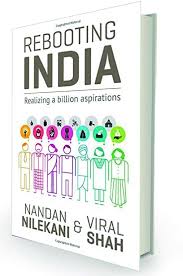








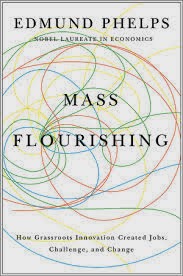









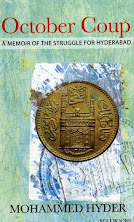

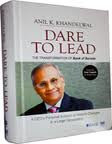














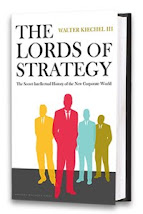














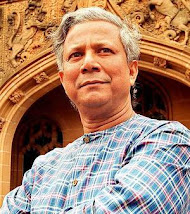








![Hyderabad: A Book [or two] and A Movie](http://3.bp.blogspot.com/_mxWA9ZVkKhQ/S0vnLAO90CI/AAAAAAAABYM/WgbSbAcAaEk/S214/luther1.0.jpg)







![Two Lives [and this is not about Vikram Seth]](http://1.bp.blogspot.com/_mxWA9ZVkKhQ/S0vjkyDYRvI/AAAAAAAABXM/mJGK-_gZiNg/S214/mansur.jpg)





No comments:
Post a Comment